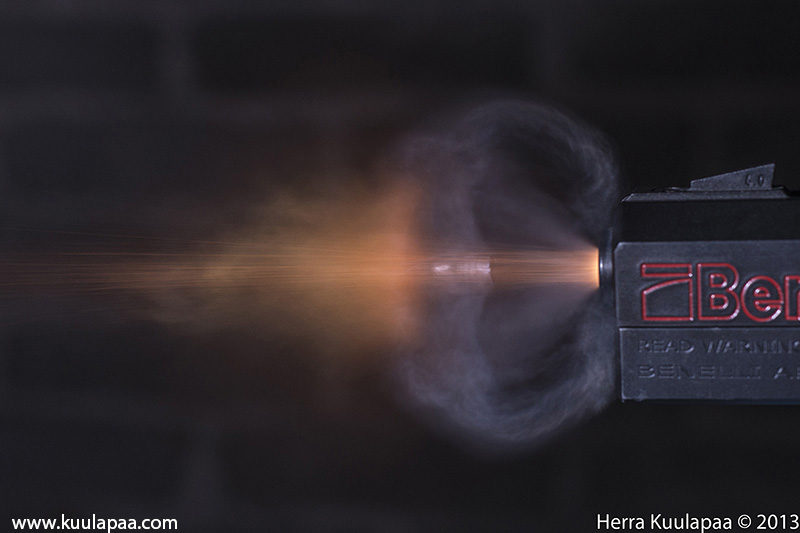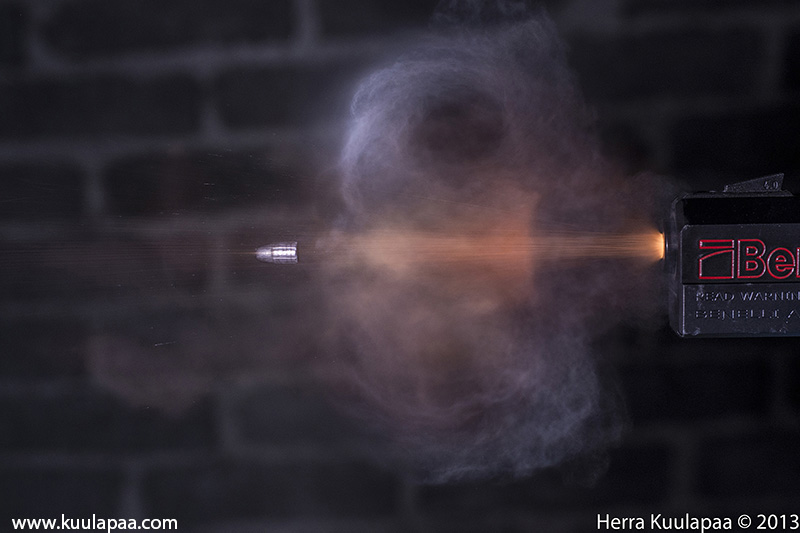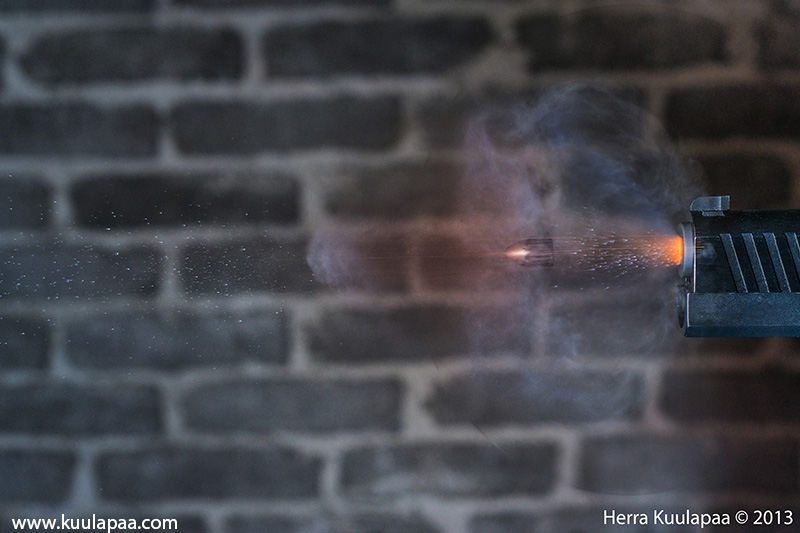It looks like the projectile is not well aligned with the barrel, and is pointed significantly downward. Compared to the straightline flash you can see all the way across the photo out of the barrel, the projectile is substantially out of alignment.
This is a well-known phenomenon in ballistics. Bullets generally leave a rifled barrel with a longitudinal wobble that causes the nose and tail of the bullet to travel in a slightly helical path once spin is taken into account.
The reason this occurs is that, in the real world, barrels are never perfectly straight, bullets are never perfectly concentric, and muzzles are never cut exactly perpendicular to the bore axis. More precise construction can minimize these problems but never eliminate them.
However, if the bullet is close to concentric and the rifling twist is correct, the bullet will stabilize and assume a straighter attitude as it travels. This is the reason why some firearms- most notably rifles optimized for long-range precision- will often shoot more precise groups at long range than at short range, e.g. a rifle may consistently shoot 1.0 MOA @ 300m when it only shoots 1.5 MOA @ 100m.
One thing I found interesting about the photos is how little the STI's slide and barrel move between photos #3 and #4. It may
seem like the slide of a 9mm pistol moves quickly, but its velocity is pretty slow compared to the bullet!

(OTOH I believe the Benelli MP90 uses a separate bolt rather than a slide; what appears to be the slide/frame interface is actually a cosmetic line on the side of the barrel shroud, which is why no movement is apparent.)









